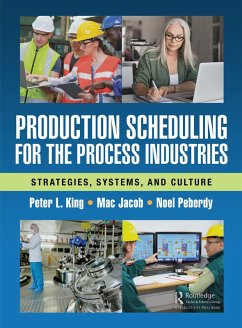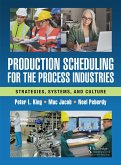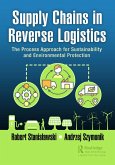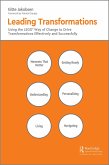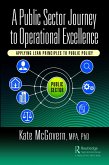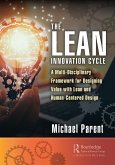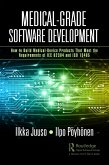Peter L. King, Mac Jacob, Noel Peberdy
Production Scheduling for the Process Industries (eBook, PDF)
Strategies, Systems, and Culture
59,95 €
59,95 €
inkl. MwSt.
Sofort per Download lieferbar

30 °P sammeln
59,95 €
Als Download kaufen

59,95 €
inkl. MwSt.
Sofort per Download lieferbar

30 °P sammeln
Jetzt verschenken
Alle Infos zum eBook verschenken
59,95 €
inkl. MwSt.
Sofort per Download lieferbar
Alle Infos zum eBook verschenken

30 °P sammeln
Peter L. King, Mac Jacob, Noel Peberdy
Production Scheduling for the Process Industries (eBook, PDF)
Strategies, Systems, and Culture
- Format: PDF
- Merkliste
- Auf die Merkliste
- Bewerten Bewerten
- Teilen
- Produkt teilen
- Produkterinnerung
- Produkterinnerung

Bitte loggen Sie sich zunächst in Ihr Kundenkonto ein oder registrieren Sie sich bei
bücher.de, um das eBook-Abo tolino select nutzen zu können.
Hier können Sie sich einloggen
Hier können Sie sich einloggen
Sie sind bereits eingeloggt. Klicken Sie auf 2. tolino select Abo, um fortzufahren.

Bitte loggen Sie sich zunächst in Ihr Kundenkonto ein oder registrieren Sie sich bei bücher.de, um das eBook-Abo tolino select nutzen zu können.
This book is aimed at manufacturing and planning managers who struggle to bring a greater degree of stability and more effective use of assets to their operations, not realizing the degree to which production scheduling affects those objectives.
- Geräte: PC
- mit Kopierschutz
- eBook Hilfe
Andere Kunden interessierten sich auch für
![Production Scheduling for the Process Industries (eBook, ePUB) Production Scheduling for the Process Industries (eBook, ePUB)]() Peter L. KingProduction Scheduling for the Process Industries (eBook, ePUB)59,95 €
Peter L. KingProduction Scheduling for the Process Industries (eBook, ePUB)59,95 €![Supply Chains in Reverse Logistics (eBook, PDF) Supply Chains in Reverse Logistics (eBook, PDF)]() Robert StanislawskiSupply Chains in Reverse Logistics (eBook, PDF)54,95 €
Robert StanislawskiSupply Chains in Reverse Logistics (eBook, PDF)54,95 €![Leading Transformations (eBook, PDF) Leading Transformations (eBook, PDF)]() Gitte JakobsenLeading Transformations (eBook, PDF)45,95 €
Gitte JakobsenLeading Transformations (eBook, PDF)45,95 €![A Public Sector Journey to Operational Excellence (eBook, PDF) A Public Sector Journey to Operational Excellence (eBook, PDF)]() Kate McgovernA Public Sector Journey to Operational Excellence (eBook, PDF)34,95 €
Kate McgovernA Public Sector Journey to Operational Excellence (eBook, PDF)34,95 €![Giving Wings to Her Team (eBook, PDF) Giving Wings to Her Team (eBook, PDF)]() Tilo SchwarzGiving Wings to Her Team (eBook, PDF)27,95 €
Tilo SchwarzGiving Wings to Her Team (eBook, PDF)27,95 €![The Lean Innovation Cycle (eBook, PDF) The Lean Innovation Cycle (eBook, PDF)]() Michael ParentThe Lean Innovation Cycle (eBook, PDF)44,95 €
Michael ParentThe Lean Innovation Cycle (eBook, PDF)44,95 €![Medical-Grade Software Development (eBook, PDF) Medical-Grade Software Development (eBook, PDF)]() Ilkka JuusoMedical-Grade Software Development (eBook, PDF)54,95 €
Ilkka JuusoMedical-Grade Software Development (eBook, PDF)54,95 €-
-
-
This book is aimed at manufacturing and planning managers who struggle to bring a greater degree of stability and more effective use of assets to their operations, not realizing the degree to which production scheduling affects those objectives.
Dieser Download kann aus rechtlichen Gründen nur mit Rechnungsadresse in A, B, BG, CY, CZ, D, DK, EW, E, FIN, F, GR, HR, H, IRL, I, LT, L, LR, M, NL, PL, P, R, S, SLO, SK ausgeliefert werden.
Produktdetails
- Produktdetails
- Verlag: Taylor & Francis eBooks
- Seitenzahl: 310
- Erscheinungstermin: 13. Juni 2023
- Englisch
- ISBN-13: 9781000895537
- Artikelnr.: 67838667
- Verlag: Taylor & Francis eBooks
- Seitenzahl: 310
- Erscheinungstermin: 13. Juni 2023
- Englisch
- ISBN-13: 9781000895537
- Artikelnr.: 67838667
- Herstellerkennzeichnung Die Herstellerinformationen sind derzeit nicht verfügbar.
Peter L. King, Mac Jacob, Noel Peberdy
SECTION 1 - Introduction Chapter 1 Business Imperatives - Why Scheduling
Matters Chapter 2 Characteristics of Process Operations - and Scheduling
Challenges Chapter 3 Overview of Production Strategies Chapter 4
Scheduling Processes d Software Chapter 5 Example Process SECTION 2 -
Scheduling Strategies Chapter 6 Repetitive Scheduling Strategies Chapter 7
Dealing With Disruption SECTION 3 - Scheduling Processes, Systems,
Software Chapter 8 The role of Forecasting Chapter 9 The Role of Inventory
Chapter 10 Typical Scheduling Process Steps Chapter 11 Multi-Level
Scheduling Chapter 12 Tanks, Bins, and Flow Paths Chapter 13 The Role of
ERP in Planning and Scheduling Chapter 14 Excel as a Finite Scheduling Tool
Chapter 15 Software Designed for Production Scheduling Chapter 16 Critical
Ingredients, Raw Materials, and Components Chapter 17 Scheduling Software -
Security and Privacy SECTION 4 - Prerequisites to Good Scheduling Chapter
18 The Role of the Plant Leader Chapter 19 Scheduling Readiness Criteria
Chapter 20 Accessible, Accurate, and Complete Data Chapter 21 Effective
Production and Capacity Planning Chapter 22 Workforce Engagement Chapter
23 Changeover Reduction - SMED Chapter 24 Production Stability Chapter
25 Cellular Manufacturing Chapter 26 Managing Bottlenecks and
Constraints Chapter 27 Leading Scheduling Improvements to Drive Value:
Five Steps for Leaders Chapter 28 Where to Begin - A Roadmap to Project
Success Chapter 29 Critical Success Factors Chapter 30 Success Stories
- Examples Of Scheduling Best Practices
Matters Chapter 2 Characteristics of Process Operations - and Scheduling
Challenges Chapter 3 Overview of Production Strategies Chapter 4
Scheduling Processes d Software Chapter 5 Example Process SECTION 2 -
Scheduling Strategies Chapter 6 Repetitive Scheduling Strategies Chapter 7
Dealing With Disruption SECTION 3 - Scheduling Processes, Systems,
Software Chapter 8 The role of Forecasting Chapter 9 The Role of Inventory
Chapter 10 Typical Scheduling Process Steps Chapter 11 Multi-Level
Scheduling Chapter 12 Tanks, Bins, and Flow Paths Chapter 13 The Role of
ERP in Planning and Scheduling Chapter 14 Excel as a Finite Scheduling Tool
Chapter 15 Software Designed for Production Scheduling Chapter 16 Critical
Ingredients, Raw Materials, and Components Chapter 17 Scheduling Software -
Security and Privacy SECTION 4 - Prerequisites to Good Scheduling Chapter
18 The Role of the Plant Leader Chapter 19 Scheduling Readiness Criteria
Chapter 20 Accessible, Accurate, and Complete Data Chapter 21 Effective
Production and Capacity Planning Chapter 22 Workforce Engagement Chapter
23 Changeover Reduction - SMED Chapter 24 Production Stability Chapter
25 Cellular Manufacturing Chapter 26 Managing Bottlenecks and
Constraints Chapter 27 Leading Scheduling Improvements to Drive Value:
Five Steps for Leaders Chapter 28 Where to Begin - A Roadmap to Project
Success Chapter 29 Critical Success Factors Chapter 30 Success Stories
- Examples Of Scheduling Best Practices
SECTION 1 - Introduction Chapter 1 Business Imperatives - Why Scheduling
Matters Chapter 2 Characteristics of Process Operations - and Scheduling
Challenges Chapter 3 Overview of Production Strategies Chapter 4
Scheduling Processes d Software Chapter 5 Example Process SECTION 2 -
Scheduling Strategies Chapter 6 Repetitive Scheduling Strategies Chapter 7
Dealing With Disruption SECTION 3 - Scheduling Processes, Systems,
Software Chapter 8 The role of Forecasting Chapter 9 The Role of Inventory
Chapter 10 Typical Scheduling Process Steps Chapter 11 Multi-Level
Scheduling Chapter 12 Tanks, Bins, and Flow Paths Chapter 13 The Role of
ERP in Planning and Scheduling Chapter 14 Excel as a Finite Scheduling Tool
Chapter 15 Software Designed for Production Scheduling Chapter 16 Critical
Ingredients, Raw Materials, and Components Chapter 17 Scheduling Software -
Security and Privacy SECTION 4 - Prerequisites to Good Scheduling Chapter
18 The Role of the Plant Leader Chapter 19 Scheduling Readiness Criteria
Chapter 20 Accessible, Accurate, and Complete Data Chapter 21 Effective
Production and Capacity Planning Chapter 22 Workforce Engagement Chapter
23 Changeover Reduction - SMED Chapter 24 Production Stability Chapter
25 Cellular Manufacturing Chapter 26 Managing Bottlenecks and
Constraints Chapter 27 Leading Scheduling Improvements to Drive Value:
Five Steps for Leaders Chapter 28 Where to Begin - A Roadmap to Project
Success Chapter 29 Critical Success Factors Chapter 30 Success Stories
- Examples Of Scheduling Best Practices
Matters Chapter 2 Characteristics of Process Operations - and Scheduling
Challenges Chapter 3 Overview of Production Strategies Chapter 4
Scheduling Processes d Software Chapter 5 Example Process SECTION 2 -
Scheduling Strategies Chapter 6 Repetitive Scheduling Strategies Chapter 7
Dealing With Disruption SECTION 3 - Scheduling Processes, Systems,
Software Chapter 8 The role of Forecasting Chapter 9 The Role of Inventory
Chapter 10 Typical Scheduling Process Steps Chapter 11 Multi-Level
Scheduling Chapter 12 Tanks, Bins, and Flow Paths Chapter 13 The Role of
ERP in Planning and Scheduling Chapter 14 Excel as a Finite Scheduling Tool
Chapter 15 Software Designed for Production Scheduling Chapter 16 Critical
Ingredients, Raw Materials, and Components Chapter 17 Scheduling Software -
Security and Privacy SECTION 4 - Prerequisites to Good Scheduling Chapter
18 The Role of the Plant Leader Chapter 19 Scheduling Readiness Criteria
Chapter 20 Accessible, Accurate, and Complete Data Chapter 21 Effective
Production and Capacity Planning Chapter 22 Workforce Engagement Chapter
23 Changeover Reduction - SMED Chapter 24 Production Stability Chapter
25 Cellular Manufacturing Chapter 26 Managing Bottlenecks and
Constraints Chapter 27 Leading Scheduling Improvements to Drive Value:
Five Steps for Leaders Chapter 28 Where to Begin - A Roadmap to Project
Success Chapter 29 Critical Success Factors Chapter 30 Success Stories
- Examples Of Scheduling Best Practices
